He's dressed Lady Gaga and Oprah. Now, designer Prabal Gurung wants to redefine Americana.
NEW YORK— As models glided down the rain-soaked runway wearing ethereal looks in Prabal Gurung's unique brand of timeless silhouettes at New York Fashion Week, guests holding up clear umbrellas sat transfixed as if they had become part of the performance.
Just before stepping onto the gold mylar-covered runway to take his bow after debuting his spring/summer 2024 collection on Sept. 8, Gurung bent down to touch the ground with his right hand, a ritual often followed by artists in India and Nepal in deference to their art, signaling humility and respect.
"You know, no one's bigger than Mother Earth. It grounds me immediately," says Gurung the following week as he sits in his showroom in Manhattan's Fashion District wearing a casual white cotton kurta and jeans. "That very act for me, keeps me grounded. Like, I'm not bigger than the ground I am walking on."
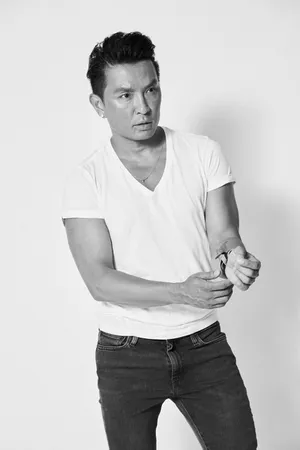
Among guests cheering that day at Four Freedom's Park at the tip of Roosevelt Island were Venus Williams, Maddie Ziegler, Sarah Hyland, Lori Harvey, Padma Lakshmi, Kal Penn and Sarita Choudhury.
With a long list of boldface names Gurung's dressed – including Michelle Obama, Oprah Winfrey, Princess Kate, Lady Gaga, Priyanka Chopra and Kylie Jenner in the 14 years he's been in business – the 44-year-old designer is not just talking about staying grounded for the event.

The Nepalese-American designer has been vocal about immigrant rights, women's rights and addressing a changing America, asking a provocative question during one of his shows: Who gets to be American?
Gurung, who was elected as vice-chair of the Council of Fashion Designers of America this year, says redefining Americana is part of his mission.
"Americana is usually Ralph Lauren and Donna Karen and Calvin Klein. That's what we think about," he says. "The America that I see is a lot more diverse than that. It's still glamorous, still beautiful. So I want to create that world."
The theme of his latest collection is "West meets East," where many of the designs are inspired by the fluid sari. Gurung seeks to flip the script of the traditional narrative of "East meets West," where minorities or smaller players meet the dominant forces.
On a mission to "decolonize" the prevalent notions of fashion, where bold colors or styles are often seen as garish or tacky, Gurung says it's time America's fashion reflected its people.
It's clearly resonating.

Prabal Gurung's famous followers Sarita Choudhury, Padma Lakshmi hint at Asian American buying power
Choudhury, the actress joining Carrie Bradshaw's stylish circle in Max's "And Just Like That…," is a fan of Gurung's creations."Even though they're intricate and look very elegant, they're so effortless," she says. "And bravo to his non-fear of color, using color in a way that only us Asians understand on a very subtle, deep level."
It also makes economic sense.
The Asian diaspora in the United States nearly doubled between 2000 and 2019, while the group's buying power has surged by 314% during the same period, according to data from Nielsen and the University of Georgia's Selig Center for Economic Growth Report.
The Asian American consumer market, currently at $1.3 trillion, is expected to grow to $1.9 trillion by 2026, according to the report, which posits companies can no longer take a one-size-fits-all approach to marketing consumer goods and services.

"To have Prabal, who has devoted his life not just to being an incredible fashion icon but a cultural savant and a cultural activist, has been really important," says Bing Chen, CEO of Gold House, a nonprofit seeking to promote the interests of people of Asian and Pacific Islander descent, where Gurung is a founding member.
That's one of the things Padma Lakshmi likes about him. Clad in a colorful knit knee-length Prabal Gurung dress she acquired more than a dozen years ago, the television host and author waited to greet Gurung after his show.

"He can be very exuberant and love all the glitzy stuff. But he is also a deep person," she says. "He contains multitudes."
Who is Prabal Gurung? Designer reveals growing up an 'effeminate kid' – with an eye for fashion
Gurung, who was born in Singapore and grew up in Nepal and India, moved to New York in 2000 to attend the Parsons School of Design.
In Nepal, there were no fashion designers he says he could look up to.
"They used to say fashion designing was a hobby for bored housewives," he says. "For my relatives, I was a cautionary tale, like, 'Oh, we don't want our child to be like that.'"
After interning for Donna Karen while at Parsons and working for Cynthia Rowley soon after graduation, he worked as a design director at Bill Blass for five years. When the 2008 recession led the label's parent company to shutter the brand's operations, Gurung was out of a job.
"No one was hiring," he says. "I had to move out of my big apartment and go on unemployment."
Not only did the experience not faze him, he decided it was the right time to give his dream of starting his own brand a chance.

"I was an effeminate kid. I was always sketching. I used to get bullied, and I used to get beaten up a lot," says Gurung, who identifies as queer and gay. "If you know what it feels like to be metaphorically and literally punched and beaten down and then you've managed to come out alive, you can do it time and time again."
An overnight success for Prabal Gurung's namesake brand, with designs for Oprah Winfrey, Demi Moore
During his time at Blass, Gurung says he was "relentlessly" sketching and creating designs for what could one day be his own label made for a woman of "style and substance."
As Bill Blass wound down its operations, fabric spools were set to be discarded. Gurung, short on cash and big on vision, used most of that to design his first line.
The seamstresses, with whom he'd built relationships, took the fabric home and returned the finished product.
He debuted his fall 2009 collection during New York Fashion Week with those clothes, using models who worked for free and a friend's donated space for his presentation at an art gallery in Chelsea.
He wasn't expecting much.
"You hope for some press coverage as a new designer," says Gurung.
Remarkably, a red silk dress with a Valentine bow that Gurung made from the throwaway Blass fabric made it to the cover of Women's Wear Daily. As if on cue, he turned into an overnight sensation.
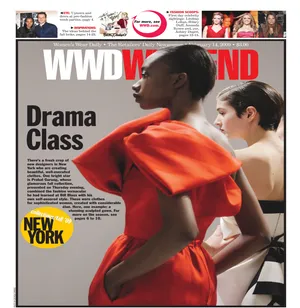
Demi Moore was one of the first celebrities to call, with Rachel Weisz, Zoe Saldaña and Winfrey soon joining his client roster.
Driven by purpose and leaving a legacy
It seemed to Gurung like it was all happening too fast.
"I wasn't prepared for it. The level of attention and fame and everything, nobody can predict," he says. "When I launched my career, I thought I was going to build it up slowly."
Unsure how to deal with it all, Gurung – raised by a single mother who was supportive of his passions and accepting of his identity – says he reached out to his family to stay centered.
In Hinduism and Buddhism, the idea of the impermanence of a moment is deeply rooted, and Gurung, who describes himself as a Buddhist Hindu, says to be consciously aware of it has been his "life's mantra."
Wanting to build something lasting, Gurung and his family founded the Shikshya Foundation Nepal, which has helped over 500 girls get education since 2011.
"It started with 12 girls," he says, including the children of sex workers and the incarcerated. "Now we have art therapy in remote villages, and we also educate women who are in prisons."
After the 2015 Nepal earthquake, he launched a relief fund which raised close to $1 million.
"I just want to make sure what I leave behind is bigger than me," says Gurung.
He also has the ability to engage with, and inspire a global audience.
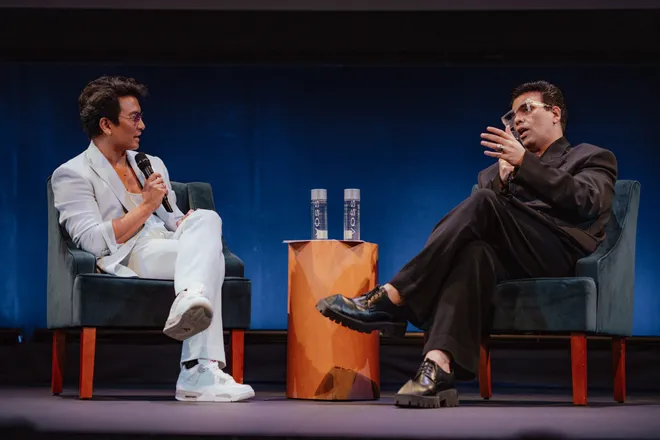
On Sept. 14, he held a public conversation at a Gold House produced event held at New York University with Karan Johar, the famed Indian director and producer whose recently released Hindi movie "Rocky Aur Rani Kii Prem Kahani" challenges the heteronormative ideals of masculinity.
Johar was effusive in his post-event praise for Gurung.
"It's not easy to break through in a country like the United Sates of America and make a brand for yourself, create a legacy and be a bonafide artist," Johar says. "He's such an inspiration to so many Indians and Asians across the world."
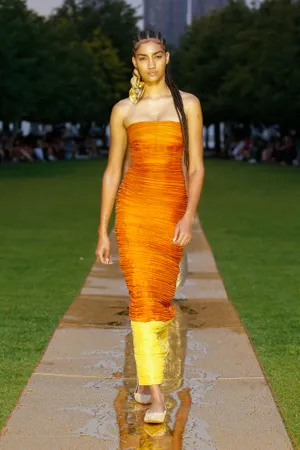
At his showroom, Gurung says he chose the Four Freedoms Park as his show venue because he wanted his guests to ponder their freedom to be themselves.
"The gold mylar was my idea of the yellow brick lane, that when you show up unapologetically as yourself in your full glory, it is the ultimate resistance to everything that is against you," he says. "I'll never forget as I walked there. As I touched the ground and I looked up, I am not exaggerating, I felt this … emotional surge of energy, a love that came my way."
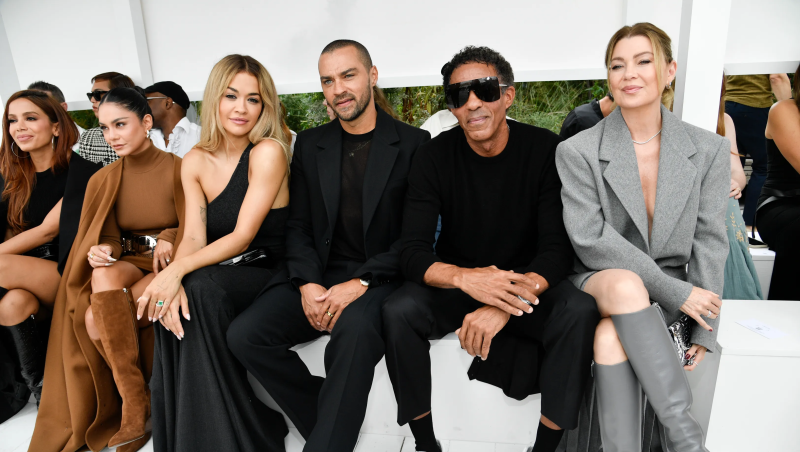
Disclaimer: The copyright of this article belongs to the original author. Reposting this article is solely for the purpose of information dissemination and does not constitute any investment advice. If there is any infringement, please contact us immediately. We will make corrections or deletions as necessary. Thank you.







